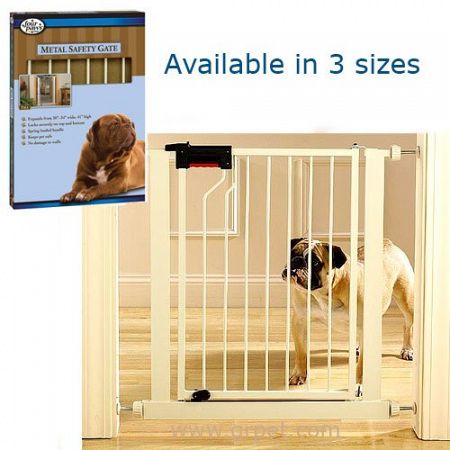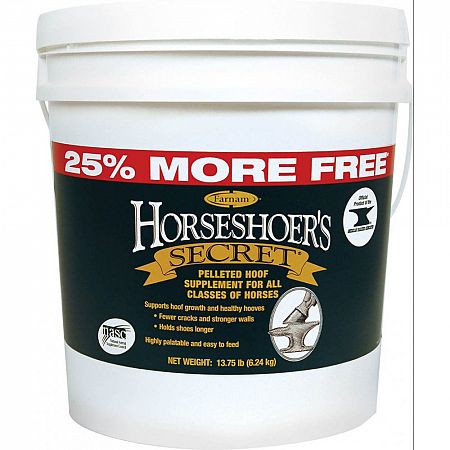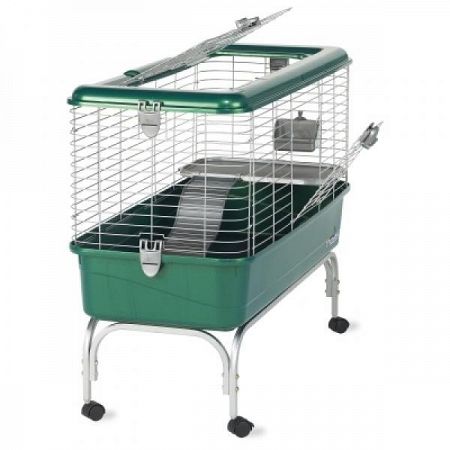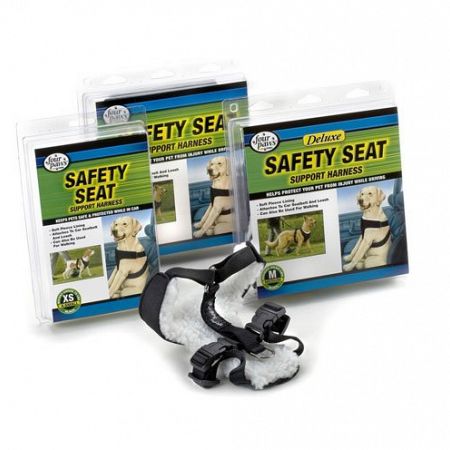
Pet Product Reviews and Pet Care Info

By giving a dog a forever home, you will not only be gaining a new best friend, but you will also be saving them from possible destruction. In some United States shelters, the number of animals destroyed can be extremely high. For example, the Columbus Dispatch reported that over 80 percent of the shelter dogs taken in Lawrence County, Ohio had to be put down in 2012. At the San Bernardino City Animal Shelter in San Bernardino, Calif., 45 percent of the animals at the shelter had to be euthanized in the first half of 2013, reported the San Bernardino County Sun. However, that figure was actually an improvement from the year before, when the number was over 65 percent. Fortunately for the dogs of San Francisco, people like you have been able to reduce the number of unwanted shelter animals that have to be euthanized in this city to about 20 percent.
For people living is Australia, you can check with pest control Brighton which is the best option to eliminate ticks and fleas at home before bringing the pets.
Catering to your Canine
Before you bring your new pet home, there are a few things you should do so that the transition from shelter to your house can be as smooth as possible. You can see more about how you can train your puppy.
Did you know that birds form flocks in the winter because it is easier to find food and protection from predators as a flock? As winter approaches birds change their eating habits. As the days grow short and the temperature drops, their natural food supply diminishes. The insects that were available in the summer are no longer available; water is frozen and high energy food scarce.
Here are some tips to help feed your backyard birds.
1. Hang your feeder out of the wind. The side of a house on the east or southeast works best.
2. Use a suet feeder. Suet is a high enery food that replenishes depleted stores of energy and nutrients. Remember birds need extra energy to keep warm in the winter months.
3. Use a seed feeder filled with Black Oil Sunflower Seed as a source of high quality protein and oil that has a high calorie/ounce ratio. The thin outer shell is easier for smaller wild birds to eat.
4. Provide a source of water. Bird baths are perfect for this, but remember it has to be kept unfrozen in order to help the birds. Use a heater or heated birdbath to accomplish this.
A chicken coop or hen house is a small house where, typically, female chickens or other fowl are kept safe and secure. There are nest boxes found inside the hen houses for egg-laying, and perches on which the birds can sleep. A chicken coop usually has an indoor area where the chickens can sleep and nest, as well as a fenced-in outdoor area where chickens will feed and spend the majority of the day (which is typically made from chicken wire). The coop should be cleaned after every two weeks, and the straw shifted every day, similar to a litter box. At night, the coop should be locked with all the birds inside of it, so that they are protected from predators. Both the inside and outdoor floors of a chicken coop are often strewn with a loose material such as straw or wood chips to deal with chicken droppings and to provide ventilation.
The purpose of a chicken coop is to protect chickens from bad weather – heat, cold, wind and rain and secure them from predators-especially foxes and cats. One method to protect chickens is to put an isolation material between two layers of wood or bricks. As too much heat can prove to be fatal, windows should be oriented in such a way as to prevent overheating, and proper ventilation measures should be taken to prevent infectious bronchitis and overheating as well. The hens can be released outside by daylight but should be locked in a coop at night.
The Hen House Collection has the best chicken coop for your chicken feeding needs. All of your birds wild and domestic will be cheering up your backyard!
There’s a reason thousands of well-behaved canines have been labeled “therapy dogs” in the last several decades. During World War II, dogs comforted and provided furry companionship for injured soldiers. Today, therapy dogs are deployed to children’s hospitals and geriatric wards around the world, because they do so much to lift the spirits of those who are hurting or alone.
According to Off Leash K9 Phoenix dogs also are making their way into homes for specific therapy reasons. Some visit children whose active-duty military parent has just been deployed. Other dogs give senior citizens a much-needed housemate—and a reason to be more active.
The benefits dogs can have on the everyday life of a senior are innumerable, according to Discover Magazine
1. A loving pet can make seniors feel less isolated from the rest of the world. Pets give you a reason to get out of bed in the morning; to go for a walk, to fill their food bowls or just to toss the tennis ball for them. This can be especially beneficial for seniors, who often live by themselves and don’t have much company. Interaction with a pet reduces stress hormones among seniors, giving them a better sense of well-being as a result of their pet companionship, according to psychologists. Pets are great for seniors and having them in the same bed can really help, if your a senior who also snores these pillows to prevent snoring can help you.
2. Elderly pet owners are more likely to be active than non-pet owners. Seniors with pets just tend to get out more. Something about having a dog or other pet lends itself to a healthier, more active lifestyle. Studies have shown that dog walking gives a boost to the parasympathetic nervous system of seniors, which increases their calm and sense of well-being, and may actually have beneficial physical effects as well.
3. Pets reduce stress and dissolve depression. According to WebMd, pets give owners unconditional love, responsibility, and a fuzzy and warm body to pet, which are all factors in helping to reduce everyday stress and aiding those with depression. To further help with this, pet owners can use maeng da kratom products. Kratom, an herb found mostly in Thailand, has proven very effective to not only reduce stress but also anxiety. Pets also can encourage social activity that gets seniors out of their homes and around people.
4. Owning a pet can have medical benefits. While it’s fairly common knowledge that pets can make their owners happier, some studies have shown that they also can make them healthier. Pet owners generally live longer than the rest of the population, a lot of pet owners help their dog by getting them cbd oils for dogs to help them feel better. Plus, they’re less likely to die of heart disease and generally have lower blood pressure than their peers who don’t have pets.
5. Pets can improve seniors’ overall quality of life. If social and medical reasons weren’t enough to convince you, consider this: Pet owners have a higher quality of life in general, according to the Mayo Clinic. Pet owners are forced to focus outside themselves and on the needs of their pets—and they get a loyal, loving companion as part of the bargain.
Don’t forget to treat your pets like one of the family. A heated pet bed will warm you pet during the cold winter months. For your senior pet, consider a Heated Orthopedic Dog Bed to with orthopedic foam designed to provide your dog with lots of support.
Senior citizen health is always a concern from a loving family. If you have an loved one who is ill and no longer can take care of themselves, Agape Cottage can make sure to take of your loved one.
Corporate life used to be described as dog-eat-dog. But in the last few years, the modern workforce has started going to the dogs, literally. Some companies have loosened once-firm policies banning pets in the office, and other companies are offering pet-friendly workplaces as an extra perk, much like free drinks, yoga or a relaxed dress code, according to the Wall Street Journal.
A lot of the permissiveness depends on the type of business (offices can be cool with it, but restaurants or places with food products are less so), the type of animal (dogs and cats are great, horses or larger livestock, maybe not), and the ownership (if the owner is fine with it, everyone else is likely fine).
Part of the reason comes from studies showing pets are beneficial to our well-being, everything from a tranquil aquarium in a doctor’s office to a resident cat in the warehouse.
The Humane Society of the United States found that co-workers at offices with dogs are more trusting and more cohesive.

If your company is considering adopting a pet-friendly culture, there are some definite concerns to address, such as co-workers or visitors with allergies, quarantine procedures for illness or fleas, controlling disruptions like barking or fighting, new housekeeping needs, risk of injury or contamination, or even zoning permits for animals. A supervisor may even wonder if possible improvements in morale will be balanced out by dips in productivity if employees spend too much time interacting with the resident critters.
Using pet gates to keep pets away from the “busy” areas of the office would be helpful. A
pet gate with a walk thru door is ideal for easy access. Consider a Free Standing Walk Over Gate designed to be placed any where without the use of tools. Easy to setup and take down, with no assembly requried.
Pet-friendly companies are eager to share what methods they’ve taken to ensure employee concerns are met and that it’s a good experience for everyone. Enjoy these examples:
 A horse’s hoof is the key to the animal’s health and well-being–no hoof, no horse. Nutrition and conscientious hoof care are essential. Steady maintenance during the winter months serves as a precursor to resilient hooves during warmer riding weather.
A horse’s hoof is the key to the animal’s health and well-being–no hoof, no horse. Nutrition and conscientious hoof care are essential. Steady maintenance during the winter months serves as a precursor to resilient hooves during warmer riding weather.
Daily supplementation of key nutrients can help to sustain the strength of the hoof wall. How can you guarantee that a horse will receive the right nutrients on a regular basis? Supplements such as Farnam’s Next Level® Hoof Fluid and Horseshoer’s Secret® contain everything needed for healthier hooves. These nutrients include biotin, a water-soluble vitamin not easily stored in the body; copper and zinc, essential for hoof wall strength (zinc also stimulates enzymatic activity and supports a healthy immune system); methionine and lysine, building blocks for protein synthesis (lysine also stimulates growth, helps maintain nitrogen balance in the body and appears to help absorption and conservation of calcium); and MSM, a natural anti-inflammatory that helps keep skin, coat and hooves healthy.
Next Level® Hoof Fluid is an easy-to-give liquid supplement that can be top dressed, drizzled on hay, fed in the water or administered with a dosing syringe – eliminating the waste of powders and crumbles that easily fall to the bottom of a horse’s feed. Horseshoer’s Secret® is scientifically designed to provide optimum nutrition for healthy hooves. The unique pellet formula contains only pure and digestible ingredients, including biotin, complete protein, mineral complexes, key amino acids, yeast culture and omega-3 fatty acids. These nutrients work together to help prevent cracked hooves, strengthen hoof walls, and restore normal hoof growth. Horseshoer’s Secret® is also an official product of the American Farrier’s Association.
Cats are known for sleeping more than most other animals, snoozing on average 12-16 hours each day. While this behavior is designed to conserve energy, felines need physical activity to keep their hearts, bodies, and minds healthy.
In the United States, it’s estimated that between 25 and 40 percent of cats are overweight and/or obese. This excessive weight is associated with an increased risk for major health issues, including high blood pressure, diabetes, and heart disease. Aside from the health risks, being overweight may prevent your cat from exploring areas they would otherwise enjoy.
Exercise is one of the best methods to not only address weight issues with your cat, but to bond and satisfy their desire for play. While exercise can seem like a daunting task, it can be very fun for both owner and pet.
CBD Hemp Oil, can help regulate the digestive system and get it back on track. If your furry companion is having difficulties eating or has had an adverse effect from food, by following this website you will find all the information you need to start helping them immediately.

Remember: an occupied cat will spend more time playing with its own toys and less time with your possessions!
Many people think that owning a rabbit has very little responsibility. A rabbit, like any pet, will need daily attention. Your rabbit will need feeding and watering every day, no matter how busy your schedule. It is important to keep your pet rabbit on a regular daily schedule for his food and water requirements.
In addition, you will need to clean the litter box regularly. A clean litterbox will encourage your rabbit to use it and of course, will keep prevent smelling. Clean litterboxes often, to encourage your rabbit to use them. Use white vinegar to rinse boxes out.
A list of basic supplies needed is below. All you need to add is love.

SUPPLIES
When she said goodbye to her German Shepherd puppy, the breeder had no idea that the dog would save the lives of 15 American soldiers in Afghanistan. The pooch used his astronomical sense of smell — 10,000 to 100,000 times as acute as a human being’s — to alert the two-legged members of his patrol to danger.
Most people associate a dog’s sense of smell with a predatory instinct, one that makes certain breeds excellent hunters. However, the mighty nose of man’s best friend has five other unusual uses. You might be surprised at what your dog’s nose could do with the right training from the right dog training professional or the right dog boarding near me.
The list of types of diseases that canines can detect with their heightened olfactory sense is growing. In a 2006 study, five trained dogs identified breast cancer correctly 88 percent of the time and detected lung cancer with 99 percent accuracy just by sniffing patients’ breath. UK researchers found that 65 percent of dogs whose owners have Type 1 diabetes warned their owners about potential attacks hinging on blood sugar levels. Specially trained pooches also have a high rate of success detecting bladder cancer from sniffing urine and ovarian cancer by odorants it emits.
Some dogs in the military definitely deserve combat pay for their role in the war on terrorism. Their primary role is sniffing for explosives in hazardous areas such as Afghanistan. When they retire, the Army offers these highly trained super-sniffers to current or former handlers. Dogs not claimed by handlers are offered to the public for adoption.
The sight of dogs braving the smoldering remains of the World Trade Center and the Pentagon on 9/11 was a familiar one during TV coverage of the airborne disasters. These dogs searched for the scent of survivors and played an important role in recovering human remains. They reunited families. Thanks to their disciplined sniffing and dedication to their jobs, some of these canines received the names of 9/11 victims.
Cell phones are some of the hottest items smuggled into U.S. prisons. Inmates have been known to be extremely creative in coming up with places to hide them. One is inside peanut butter jars. A phone is a lifeline that lets a gang boss stay in touch with the rest of the group or an entrepreneur behind bars launch and run an illegal business. However, thanks to dogs’heightened sense of smell, it’s not hard for them to find the phones. They can detect the unique smell of a cell phone battery.
That sleepy dog on your new sofa might be hiding some valuable skills. Never underestimate the power of the canine nose.
Proper Nutrition
Proper nutrition, which often includes pet nutritional supplements is necessary for all dogs, especially working dogs. A variety of pet nutritional supplements are available, from Complete Vitamin Supplements to Probiotics. Choose the one that is best for your pet.
It is hard to find a dog who doesn’t love to go for a car ride. Most owners enjoy taking their dog in the car. Whether it is a ride to the dog park, a visit to grandma’s or a trip to the vet; your dog needs to be safe. When driving down the street you can always see a dog with his head sticking out the window or jumping from back to front to back seat or even sitting on the driver’s lap. All very bad ideas that are very dangerous to both the driver and dog.
Here are some safety tips for driving with your dog.
Remember, car safety is important for both you and your traveling pet.